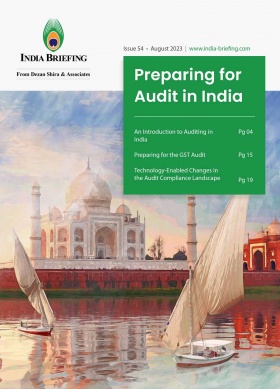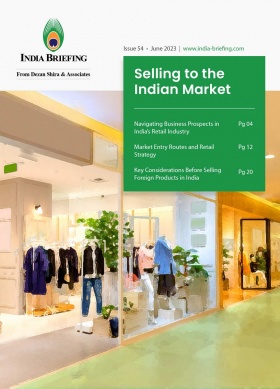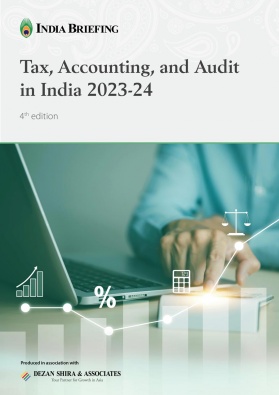India-Baltic Economic Synergy Rooted in Tech and Innovation
As India seeks diverse diplomatic and economic alliances, the Baltic States—Estonia, Latvia, and Lithuania—emerge as promising partners in the tech and innovation sectors. With growing trade and investments, India and the Baltics share mutual benefits. India’s robust tech talent pool, digital adoption, and thriving startup ecosystem align well with the Baltic region’s leadership in e-governance and digital innovation.
Growing collaboration between the regions holds potential for significant advancements in e-governance, cleantech, biotech, and other frontier industries.
As India continues to diversify its diplomatic and economic partnerships, the Baltic region offers promising prospects for cooperation.
The Baltic nations—Estonia, Latvia and Lithuania—have long emerged among the top ranking EU leaders in high-end manufacturing and innovation. India has been proactive in exploring potential areas of partnership, ranging from renewable energy and clean technologies to AI and blockchain-led transformation, supply chain logistics, and fintech. This increased engagement is evident in the growing trade relationships between India and the Baltic nations, with total trade witnessing a 19 percent growth in financial year (FY) 2022-23 over the previous year.
By strategically expanding diplomatic presence, capitalizing on technological excellence, and nurturing cultural and academic bonds, India can unlock a wealth of business opportunities and forge a robust Indo-Baltic relationship in the ever-evolving global landscape.
India-Baltic economic relationship: Trends and statistics
The India-Baltic economic relationship is based on a number of complementary strengths. India has a large and growing economy with a young and skilled workforce. The Baltic countries have a strong track record of innovation and a focus on e-governance and digital transformation.
The India-Baltic economic relationship is also mutually beneficial. India can gain access to new markets and technologies from the Baltic countries, while the Baltic countries can benefit from India’s large and growing economy.
| Import-Export Trends Between India and Baltic Countries for FY 2022-23 (US$ million) | ||||
| Export | Import | Total trade | Trade balance | |
| Lithuania | 357.44 | 114.24 | 471.68 | 243.20 |
| Estonia | 71.26 | 139.95 | 211.20 | -68.69 |
| Latvia | 187.31 | 250.12 | 437.43 | -62.81 |
| Total | 616.01 | 504.31 | 1120.31 | 111.70 |
| Total Trade Between India and Baltic Countries During FY 2019 – FY 2024* (US$ million) | ||||||
| 2018-19 | 2019-20 | 2020-21 | 2021-22 | 2022-23 | 2023-24* (April-June) | |
| Lithuania | 339.51 | 372.86 | 484.71 | 531.77 | 471.68 | 47.14 |
| Estonia | 172.53 | 119.50 | 111.79 | 134.40 | 211.20 | 118.55 |
| Latvia | 273.97 | 384.79 | 152.36 | 267.57 | 437.43 | 140.33 |
| Total | 786.01 | 877.15 | 748.86 | 933.74 | 1120.31 | 306.02 |
 India-Estonia relations
India-Estonia relations
The economic and trade relations between India and Estonia have witnessed significant developments in recent years. These relations have been driven by a mix of trade, investment, technology exchange, and cooperation in various sectors. Their shared commitment to technology, innovation, trade, and cybersecurity not only strengthens their individual economies but also sets a precedent for international cooperation. As these initiatives continue to evolve, the future holds the promise of even deeper and more impactful collaborations between these two nations.
Bilateral trade dynamics
Estonia holds a significant place in India’s trade network and India ranks as the 25th largest export partner for Estonia. In FY 2022-23, Estonia exported goods worth US$139.95 million to India, while imports from India amounted to US$71.26 million. In FY 2022-23, the total trade between both countries increased to US$211.20 million, up from US$134.40 million in FY 2021-22. This growth in bilateral trade underscores the potential for further expansion.
Major exports from India to Estonia
India’s exports to Estonia comprise a diverse array of products. Mineral products (40.4 percent) and metals and metal products (19.30 percent) lead the way, showcasing India’s resource strengths. Additionally, machinery and mechanical equipment (12.20 percent), chemical products (9.90 percent), textiles and textile products (4.05 percent), plastic and plastic products (3.79 percent), and optical measuring precision instruments (1.88 percent) reflect India’s prowess in manufacturing and technology sectors.
Major imports from Estonia to India
Estonia, in turn, provides India with vital resources and products. Imports from Estonia include mineral products (31.50 percent) and paper pulp of wood (30.20 percent), meeting India’s industrial needs. Machinery and mechanical equipment (13.60 percent) and wood and wood products (10.60 percent) indicate the demand for infrastructure and construction materials in India. Furthermore, metal products (6.24 percent) and optical measuring precision instruments (3.41 percent) highlight India’s emphasis on manufacturing and technology sectors.
Recent developments in trade
The trade dynamics have seen shifts in the first half of 2023. India’s imports from Estonia during this period include wood pulp (25.35 percent) and shaped wood (13.35 percent), reflecting the demand for raw materials in India’s manufacturing sector. Additionally, electrical signaling safety or traffic control equipment (5.54 percent) and electrical control boards (5.23 percent) indicate India’s focus on infrastructure and safety.
On the export front, India has diversified its offerings, including communication equipment (8.86 percent), activated carbon (8.13 percent), and machinery for sorting and screening (6.29 percent). Other notable exports include steel products, electric motor parts, packaged medicaments, and electrical transformers.
Investment ventures: Indian investments in Estonia
Although Indian investments in Estonia are currently limited, notable efforts have been made. Reliance Industrial Investments and Holdings Ltd. (RIIHL), a subsidiary of Reliance Industries, established Jio Estonia OU in 2018. This venture focuses on software development and consultancy, aligning with India’s technology initiatives. Additionally, a few Indian startups have made smaller-scale investments, reflecting a growing interest in Estonia’s vibrant entrepreneurial landscape.
Estonian investments in India
Conversely, Estonia has directed investments into India, with FDI equity inflows reaching US$3.54 million by June 2022. This mutual investment pattern highlights the reciprocal confidence both nations share in each other’s business environments.
E-governance and emerging technologies
India and Estonia have collaborated extensively in the realm of e-governance and emerging digital technologies. Agreements and Memoranda of Understanding (MoUs) between the Ministry of IT and Electronics India (MEITY) and Estonia’s e-Governance Academy underscore their commitment to capacity building programs and the exchange of knowledge in these domains.
Startup ecosystem and entrepreneurship
The collaboration extends to fostering entrepreneurial spirit. Indian entrepreneurs have benefited from Estonia’s startup visa programs, with delegations visiting Estonia to gain insights into its robust ICT and startup ecosystem. India’s active participation in Estonia’s start-up conference ‘Latitude 59’ in 2019 exemplifies the enthusiasm in both nations to explore innovative ventures collaboratively.
Cybersecurity initiatives
A critical aspect of their partnership lies in the domain of cybersecurity. India and Estonia have engaged in substantial cooperation, formalized through agreements and joint exercises. Delegations and cybersecurity experts from both nations have exchanged knowledge and conducted joint exercises, reinforcing their commitment to shared security objectives.
E-residency and entrepreneurial synergy
Estonia’s innovative e-residency program has found resonance in India, with approximately 3951 Indians becoming e-residents and establishing 823 companies in Estonia. India’s significant presence in Estonia’s e-residency landscape highlights the ease of doing business and the attractiveness of Estonia’s business environment for Indian entrepreneurs.
India-Lithuania relations
India and Lithuania have forged a dynamic economic partnership characterized by growing trade, strategic investments, and collaborative ventures. The growing ties between these nations not only signify mutual economic benefits but also pave the way for innovative partnerships and increased global visibility.
Bilateral trade dynamics
The bilateral trade between India and Lithuania has experienced fluctuations over the past decade. After reaching a record high of US$367.15 million in 2016-17, trade decreased to US$339.51 million in FY 2018-19 before rebounding to US$531.77 million in 2021-22. This surge highlights the resilience of the economic partnership and the proactive efforts from both sides to enhance trade relations.
Key imports and exports
Indian imports from Lithuania encompass a diverse range of goods, including edible vegetables, wood products, textiles, electrical machinery, iron, steel, and optical instruments. In return, India exports items such as nuclear boilers, pharmaceutical products, fish, organic chemicals, textiles, iron, and plastic products to Lithuania. This exchange underscores the complementary nature of the economies and their ability to fulfill each other’s demands.
Strategic investments
Indian companies have made significant investments in Lithuania, contributing to the nation’s economic growth. HCL Technologies, a leading Indian IT services provider, established its operation center in Vilnius in 2016, catering to clients like Barclays Bank and Kraft Foods. Indorama, a Lohia Group company, invested US$200 million in a state-of-the-art plastic resin manufacturing plant in the Klaipeda Economic Zone, reinforcing India’s presence in Lithuania’s industrial landscape.
Additionally, Tonbo Imaging, an Indian company specializing in advanced imaging and sensor systems, established a research and development team in Kaunas, Lithuania, highlighting the growing collaboration in technology and innovation.
Indian Chamber of Commerce in Lithuania
The establishment of the Indian Chamber of Commerce in Lithuania (ICCL) in 2018 stands as a testament to the deepening economic ties. ICCL serves as a vital platform for fostering relationships between Lithuanian and Indian entrepreneurs. By bridging the gap between the business environments of both nations, ICCL facilitates meaningful collaborations, promotes trade, and encourages investments, contributing to the bilateral economic growth.
Future prospects
The economic partnership between India and Lithuania is poised for even greater achievements. Continued efforts in trade facilitation, investment encouragement, and joint ventures are expected to bolster economic activities. Additionally, collaboration in emerging sectors, such as technology, renewable energy, and healthcare, present opportunities for mutual growth and innovation.
India-Latvia relations
Latvia, with its strategic location, economic diversification, and commitment to renewable energy, stands as a beacon of opportunity for India. In recent years, this Baltic nation has undergone a transformative economic journey, evolving from traditional sectors like agriculture to cutting-edge industries, such as pharmaceuticals, IT, and renewable energy. India, recognizing Latvia’s potential, has embraced this partnership, fostering robust investment, technological collaboration, and burgeoning trade.
Latvia’s economic landscape paints a picture of innovation and growth. A strong emphasis on privatization has catalyzed this transformation, leading to the rise of key sectors:
- Transport and logistics: With ice-free ports and robust rail and road networks, Latvia acts as a vital trade link between East and West, attracting major multinationals to set up regional headquarters.
- Manufacturing: The manufacturing sector has shifted gears, moving from basic metals to high-tech electronics, machinery, and precision instruments. Success stories in IT and design have further bolstered Latvia’s reputation.
Bilateral trade and future collaboration
Bilateral trade between India and Latvia showed a 63.48 percent increase to US$437.43 million in FY 2022-23, up from US$267.57 million in FY 2021-22. India’s exports of plastics, base metals, textiles, and chemicals complement Latvia’s imports, creating a balanced trade relationship.
Looking ahead, the scope for collaboration is vast:
- Pharmaceuticals and healthcare: Latvia’s chemical industry, especially in pharmaceuticals, recycling, and eco-friendly products, has witnessed remarkable growth, making it a global player in the pharmaceutical sector. India’s expertise in pharmaceuticals aligns with Latvia’s focus on the sector, offering avenues for research, development, and production collaboration.
- Telecommunications and IT: Both nations can tap into each other’s strengths, fostering innovation in IT, software development, and telecommunications.
- Renewable energy: Latvia’s commitment to renewable energy, sourcing 40 percent of its energy from renewable sources, aligns perfectly with global sustainability goals, making it an attractive partner for green initiatives. Both countries can collaborate in solar and wind energy projects, which could be mutually beneficial.
- Engineering and biotechnology: Latvia’s advancements in engineering and biotechnology provide a fertile ground for Indian companies to invest and innovate.
Collaborating across technology realms: A catalyst for growing India-Europe partnerships
Technology now plays a central role in India’s foreign policy, especially in its relations with the European Union and the Baltic region. The Baltic States are at the forefront of tech innovation, particularly in niche technologies and digital governance. Estonia, Latvia, and Lithuania are all leaders in ICT, while India boasts a large and growing IT and IT-enabled services industry. Collaboration opportunities abound in areas such as software development, data analytics, and cybersecurity.
 Estonia is renowned for its e-government initiatives, and Latvia and Lithuania are also heavily investing in digital innovation. The Baltic countries possess a highly skilled workforce and a thriving entrepreneurial culture.
Estonia is renowned for its e-government initiatives, and Latvia and Lithuania are also heavily investing in digital innovation. The Baltic countries possess a highly skilled workforce and a thriving entrepreneurial culture.
In the heart of India’s ambitious transformation efforts, several key technology elements have converged to create a promising environment for the intersection of Baltic countries and India in specialized domains. This convergence includes a highly skilled workforce, widespread adoption of technology, and a burgeoning startup ecosystem with a significant influence of artificial intelligence. Together, these factors have laid the foundation for substantial business opportunities to flourish between Baltic nations and India.
Riccardo Benussi – Director for Europe at Dezan Shira & Associates, notes the immense scope for business and commercial partnerships with the Baltic States in the realm of technology and innovation and illustrates how entrepreneurs in these countries have pioneered tech-based solutions.
From Skype to Transferwise (now Wise) from Bolt to G-Scan, the Baltics are not second to any tech powerhouse in Europe. With a population of nearly 6 million, Estonia leads Europe in startup density, boasting 1,107 startups per capita. Lithuania follows closely with 525 startups per capita, while Latvia also excels with 315 startups per capita. These numbers surpass the EU average of 250 startups per capita, as reported by Dealroom.co. One should come to see for themselves to witness how young leaders in biochemical, legal, and tech areas are working hard and together to make an impact locally and globally. Renewables and bio degradable packaging, self-driving hydrogen vans like Auve Tech from Estonia or, sustainable alternatives in oil and fat production like the Estonians at ÄIO; or DocLogix, the Lithuanian software house for document and processes management; or the Latvians pioneering the democratization of accessibility to financing for those who cannot get accredited (Jeff App) and more. It’s just heartwarming to speak to entrepreneurs who display such commitment and in face of obstacles keep their motivation high, to seize opportunities worldwide while making it a better place from many angles. – Riccardo Benussi, Dezan Shira & Associates
Advantage India
- India’s tech talent pool: India undeniably stands as a global hub, hosting 75 percent of the world’s digital talent per some estimates. This status is poised to endure, thanks to the annual influx of 2 million STEM graduates into the workforce. India’s vast talent pool significantly bolsters the workforce of Europe’s tech leaders like France’ Capgemini, half of whose workforce resides in India. The country also enjoys a reputation as the birthplace of top-tier tech professionals who lead prominent organizations, including Google, Adobe, Microsoft, Nokia, and IBM.
- India’s digital adoption: India’s digital prowess extends beyond its sizable tech workforce. Its over 800 million broadband users and projected one billion smartphone users by 2026 makes it the world’s largest market for connected devices. With the highest FinTech adoption rate globally at 87 percent, India’s population has embraced a wide range of digital services, ranging from online pharmacy and doctor consultations to food delivery and education technology, signaling a profound shift towards a digitally driven society.
- India’s thriving startup ecosystem: Its thriving startup ecosystem—with Bangalore and Mumbai as its epicenters—has also played a pivotal role in powering India’s digital landscape. Seven years after the launch of the government initiative Startup India, it is today the fastest-growing startup ecosystem in the world with over 75,000 startups and 100 unicorns. AI-based startups have propelled the industry forward, and with US$3.24 billion in total investments, India ranks fifth globally in the AI startup sector, surpassing South Korea, Germany, and Canada, and trailing only the US, China, the UK, and Israel. Rapid digitalization across industries, accelerated by the pandemic and automation of business processes amid remote work adoption—further amplified by the interest for generative AI products like OpenAI’s ChatGPT—are driving the expansion of India’s AI ecosystem. With a growth rate of 33 percent since 2020, AI has emerged from the fringes to become an integral part of India’s technological landscape.
Recent collaboration between India and Baltic countries
- In 2022, India and Estonia signed a Memorandum of Understanding (MoU) on cooperation in emerging digital technologies. The MoU covers areas such as artificial intelligence, blockchain, and the Internet of Things.
- In 2021, India and Latvia signed an MoU on cooperation in e-governance. The MoU covers areas such as digital identity, digital signatures, and electronic document management.
- In 2020, India and Lithuania signed an MoU on cooperation in cybersecurity. The MoU covers areas such as information security, incident response, and capacity building.
About Us
India Briefing is produced by Dezan Shira & Associates. The firm assists foreign investors throughout Asia from offices across the world, including in Delhi and Mumbai. Readers may write to india@dezshira.com for more support on doing business in India.
We also maintain offices or have alliance partners assisting foreign investors in Indonesia, Singapore, Vietnam, Philippines, Malaysia, Thailand, Italy, Germany, and the United States, in addition to practices in Bangladesh and Russia.
- Previous Article Chris Devonshire-Ellis on Why India Supports Russia’s Northern Sea Route
- Next Article Principales resultados de la Cumbre del G20 de 2023 celebrada en la India









